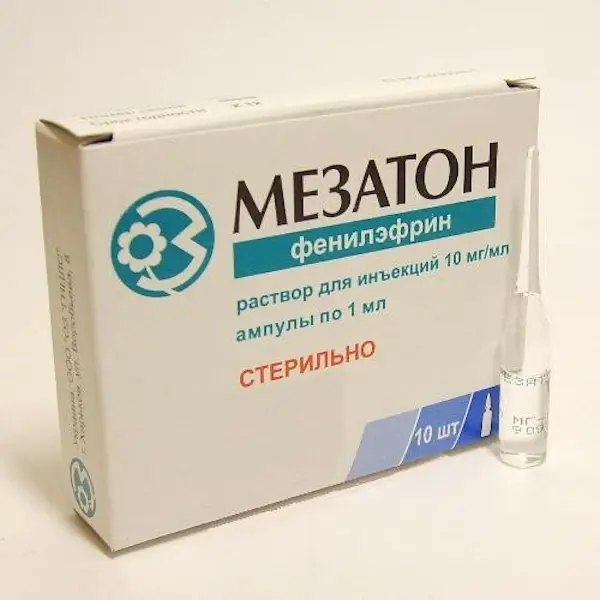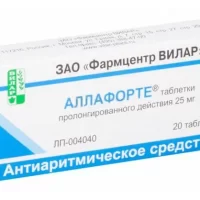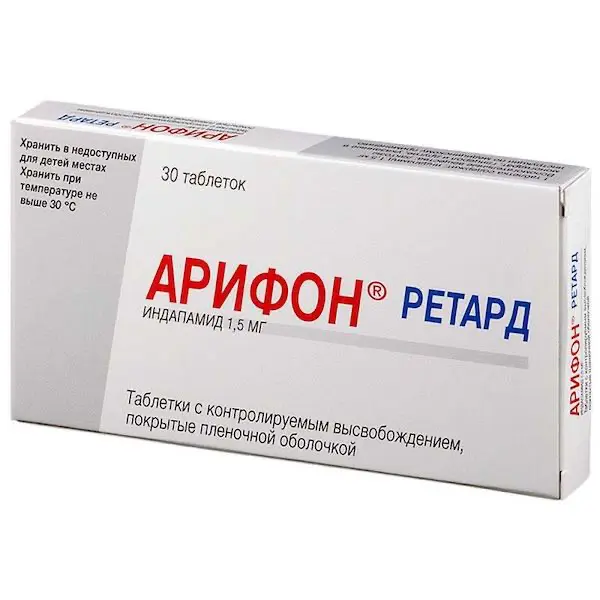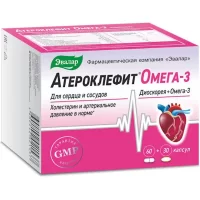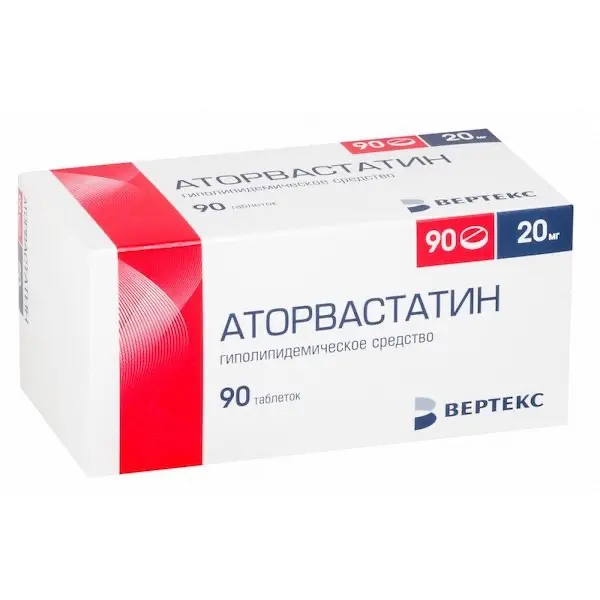Description
Mesaton Pharmacodynamics
Phenylephrine is an alpha1-adrenoceptor stimulator that slightly affects the beta-adrenoceptors of the heart; it is not a catecholamine, as it contains only one hydroxyl group in the aromatic nucleus. Causes narrowing of arterioles and increase in arterial blood pressure (BP) (with possible reflex bradycardia), but has a longer duration of action, as it is less prone to the action of catechol-o-methyltransferase.
It does not cause increase in minute blood volume.
After intravenous administration, the action of the drug develops immediately and lasts for 5-20 min. When administered subcutaneously and intramuscularly, the drug action begins after 10-15 min and lasts for 1-2 hours after injection.
Indications
– Acute arterial hypotension;
– Vascular insufficiency in case of overdose of vasodilators;
– Shock (traumatic, toxic);
– As a vasoconstrictor during local anesthesia.
Contraindications .
– Hypersensitivity to any of the components of the drug;
– Diseases accompanied by obstruction of the left ventricular outflow tract (severe aortic stenosis, hypertrophic cardiomyopathy);
– Pheochromocytoma;
– Arterial hypertension of any severity;
– Ventricular fibrillation;
– Glucose-6-phosphate dehydrogenase deficiency;
– Porphyria;
– Thyrotoxicosis;
– Closed-angle glaucoma;
– Acute myocardial infarction;
– Use concomitantly with monoamine oxidase inhibitors (MAOIs) and within 14 days after discontinuation of MAOI inhibitor therapy;
– Halothane or cyclopropane anesthesia;
– Pregnancy and breastfeeding;
– Under 18 years of age.
Dosage and administration
- Mesaton is administered intravenously, subcutaneously, or intramuscularly.
- For collapse, a single dose, when administered intravenously, is 0.1-0.5 ml of 1% solution of Mesaton.
- When administered intravenously, the single dose is diluted in 20 ml of 5% dextrose (glucose) solution or 0.9% sodium chloride solution and slowly injected by jetting.
- If necessary (if systolic BP decreases to 70-80 mmHg), the injection is repeated. The interval between repeated intravenous injections of the drug should be at least 15 minutes.
- The drug can be given intravenously by drop infusion, where 1 ml of 1% solution of Mesaton is diluted in 250-500 ml of 5% dextrose (glucose) solution.
- The initial infusion rate is 180 mcg per minute; later the infusion rate is reduced to 30-60 mcg per minute.
- For intramuscular and subcutaneous administration, the single dose is 0.3-1.0 ml of 1% solution of Mesaton.
- In local anesthesia, 0.3-0.5 ml of 1% solution of Mesaton per 10 ml of anesthetic solution shall be added.
- After prolonged intravenous infusion the drug dose should be reduced gradually to prevent development of “withdrawal” syndrome (repeated BP reduction).
- The highest dose for intramuscular and subcutaneous administration: single dose – 10 mg, daily – 50 mg. The highest dose by intravenous injection: single dose – 5 mg, daily – 25 mg.
- Incompatibilities
The drug should not be mixed with other drugs in one container.

